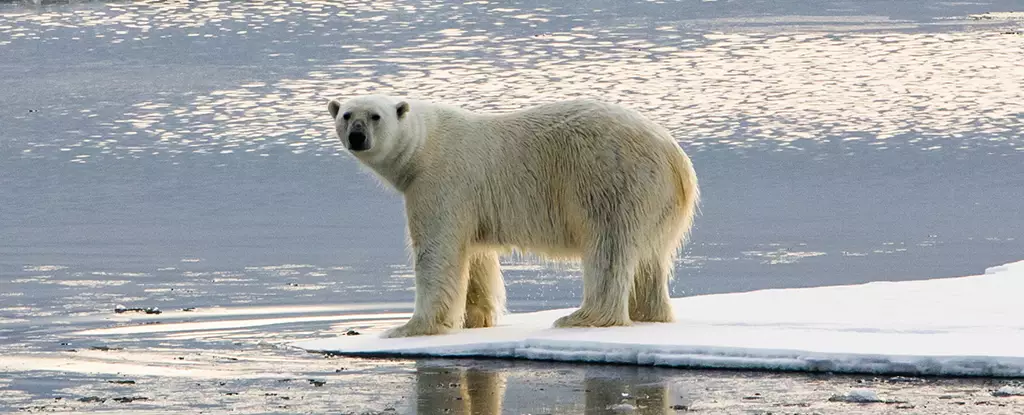The Arctic, often viewed as a pristine wilderness, is undergoing drastic transformations due to climate change. Among the most pressing areas of concern is the Last Ice Area (LIA) — the only region predicted to retain permanent ice cover in a warming world. However, new research suggests that the timeline for this critical ice sanctuary is far shorter than previously anticipated. As scientists increasingly utilize advanced climate models to study the LIA, the implications for both the climate and the ecosystem that depends on it are profound and disturbing.
A dedicated team of researchers from McGill University has harnessed the power of the Community Earth System Model to conduct a deeper analysis of the Last Ice Area. This sophisticated model offers a more intricate understanding of sea currents and ice flow patterns, revealing significant changes in how quickly the LIA’s ice cover could diminish. Bruno Tremblay, an atmospheric scientist involved in the study, emphasized the enhanced accuracy of this modeling approach, which incorporates the dynamics of ice transport in the Canadian Arctic Archipelago.
The research indicates that the central Arctic Ocean may become seasonally ice-free as soon as 2035. Following this shift, the Last Ice Area might lose its permanent ice cover within a range of 6 to 24 years. This revelation is particularly alarming, as earlier expectations suggested that the LIA could endure for several more decades.
One of the study’s critical findings centers on the northern portion of the Last Ice Area. This region acts as a pivotal gatekeeper, significantly influencing the overall health and longevity of ice cover. As the study indicates, this area plays a vital role in regulating the flow of ice out of the LIA, allowing for the accumulation of thick, multi-year ice. The researchers suggest that if the northern LIA dwindles, it could lead to accelerated ice loss across the entire region.
The implications of this finding are significant. Understanding the nuanced interactions within this ecosystem is crucial for predicting the future of the Last Ice Area. Enhanced comprehension of these dynamics offers scientists, policymakers, and conservationists a clearer picture of what actions could be taken to mitigate the loss of ice and protect the species that rely on it for their survival.
Impact on Wildlife and Indigenous Communities
The implications of the declining Last Ice Area reach far beyond climate metrics. Many species, including polar bears and various seal populations, rely on stable, year-round ice for their habitats. Alarmingly, nearly a quarter of the world’s polar bears are found in or near the LIA, facing unprecedented challenges as their environment changes. Incidents have already been documented where walruses, driven by the loss of their ice platforms, suffer fatal falls while seeking alternative terrestrial habitats.
This environmental degradation does not solely impact wildlife; it is a critical issue for Indigenous communities that depend on the Arctic ice for subsistence hunting. The interplay between traditional ways of life and modern climate challenges illustrates a complex tapestry of cultural, ecological, and economic dimensions that are becoming increasingly difficult to maintain as ice recedes.
The Need for Urgent Action
Amid the alarming findings of the study, there is a pressing call for immediate action. The Canadian government has recognized the significance of the LIA, designating part of it as the Tuvaijuittuq Marine Protected Area. The name “tuvaijuittuq,” meaning “the place where the ice never melts” in Inuktut, underscores the importance of this region. However, given the hastening pace of climate change, the effectiveness of such protections may soon come into question.
The modifications to the Last Ice Area accentuate the urgency of addressing climate change on a global scale. Scientists stress that to stabilize projections for this critical habitat and other essential Arctic environments, immediate efforts to reduce global warming are crucial. The new findings not only serve as a scientific update but also as a clarion call for society to confront the environmental crises that loom ahead.
The revelations surrounding the Last Ice Area stand as a stark reminder of the fragility of our planet’s ecosystems in the face of climate change. The research from McGill University paints a sobering picture of a region that once seemed resilient but is now teetering on the brink of collapse. From wildlife to Indigenous communities, the ramifications of a warming Arctic extend far and wide, emphasizing the need for collective action. If we are to ensure the survival of the Last Ice Area and the lives it supports, we must act swiftly and decisively to combat climate change. The future of the Arctic—and indeed, the planet—depends on it.


Leave a Reply